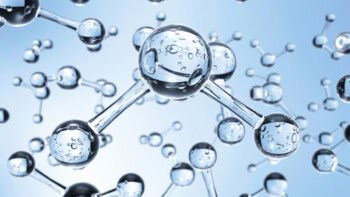
A new technique that accelerates positrons much more efficiently than conventional particle accelerators has been unveiled at the SLAC National Accelerator Laboratory in the US. The technology has the potential to make future positron accelerators more powerful yet more compact, and could also be used to boost the maximum collision energy of existing electron/positron colliders.
Some particle physicists believe that the next big facility after the Large Hadron Collider (LHC) should be a high-energy lepton collider that smashes electrons and positrons (antielectrons) together. Such a machine would produce cleaner, easier-to-interpret collisions than a hadron collider, and would create a far greater proportion of new particles per collision. To reach a high enough energy, such an electron/positron collider would have to run in a very long, straight line. This is because conventional accelerator technology using radiofrequency electromagnetic field cavities has a maximum energy gradient of about 100 MeV/m. The proposed 0.5 TeV International Linear Collider (ILC), for example, is expected to be about 30 km long, including two 11 km accelerator sections. For this reason, accelerator physicists are trying to develop new ways to accelerate electrons and positrons so the particles reach higher energies over shorter distances.
One such method is “plasma wakefield acceleration”, which was first demonstrated in 2007 and involves firing bunches of electrons into a plasma. An initial “drive” bunch repels the free electrons in the plasma, and this creates a charge-density wave. A second, trailing bunch of electrons “surfs” this wave and gains energy very rapidly. In 2014 Sebastien Corde and researchers at the SLAC National Accelerator Laboratory in California, and international colleagues, accelerated electrons through a gradient of 4.4 GeV/m using this method. Unfortunately, this technique cannot be applied directly to the acceleration of positrons because there is no practical way of creating an “anti-plasma” containing free positrons.
One bunch, not two
In this latest research, the same team has modified its technique to allow positrons to be accelerated. The process begins with a single bunch of positrons from a conventional accelerator that is injected into a lithium plasma. Under the right conditions, the positron bunch will interact with the plasma, causing the front portion of the bunch to behave like the drive bunch in an electron accelerator. The front portion of the bunch will slow as it feeds energy into the plasma electrons. Meanwhile, the back end of the same bunch plays the role of the trailing bunch, drawing energy back out of the plasma and being accelerated.
“The overall energy of the bunch is obviously not going to be increased, because energy must be conserved,” explains Corde. “We are just transferring energy from the front to the tail. What’s important for particle colliders is that each particle has a very large energy.” The team has dubbed the technique “self-loaded plasma wakefield acceleration”. The team boosted the energy of the positrons at the end of the bunch by 5 GeV/m.
Multi-stage acceleration
Today, the researchers believe the plasma-wakefield technique could double the energy of particles in a conventional accelerator, allowing particles in the ILC to reach 1 TeV before collision. Further optimization may boost this multiplication factor, perhaps as high as five. Ultimately, it may be possible to construct a multi-stage plasma wakefield accelerator, in which the same bunches of particles could be accelerated multiple times. However, as only a fraction of the positrons are accelerated in each stage, simply separating out the accelerated positrons over and over again would rapidly produce a very small bunch. The researchers therefore aim to separate the accelerated trailing bunch from one stage and manually load it into the back of a fresh bunch of positrons. “We have a good idea that it could work but it’s also a technically challenging experiment,” says Corde. “We will work on that.”
“The electron was relatively easy to accelerate, but the positron was actually a big deal,” says beam physicist Philippe Piot of Northern Illinois University in the US, who says the research is “the first experimental proof” that plasma wakefield acceleration can accelerate positrons. He says that more research is needed into the scattering of both electrons and positrons during this type of acceleration before wakefield acceleration can be applied in any accelerator. “There are still a lot of issues, but given the progress that has been made over the last decade in this type of acceleration, I personally would be optimistic,” he says.
The acceleration technique is described in Nature.



